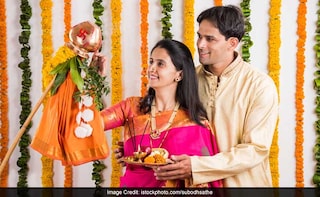India, the land of festivals, is ready to celebrate Gudi Padwa. Each festival, regardless of the region or the state where it is celebrated, has a beautiful seasonal, cultural or a mythological significance attached to it. The Maharashtrian festival of Gudi Padwa is celebrated as Yugadi in Karnataka, or Ugadi in Telangana and also as Navreh by Kashmiri Pandits and Cheti Chand by Sindhis. It revolves around the celebration of spring in the agricultural calendar. The date signifies the end of one season and the beginning of another. The rabi crop has just been harvested and it is time for mangoes to flood the market.
Advertisement
For the latest food news, health tips and recipes, like us on Facebook or follow us on Twitter and YouTube.
Advertisement
